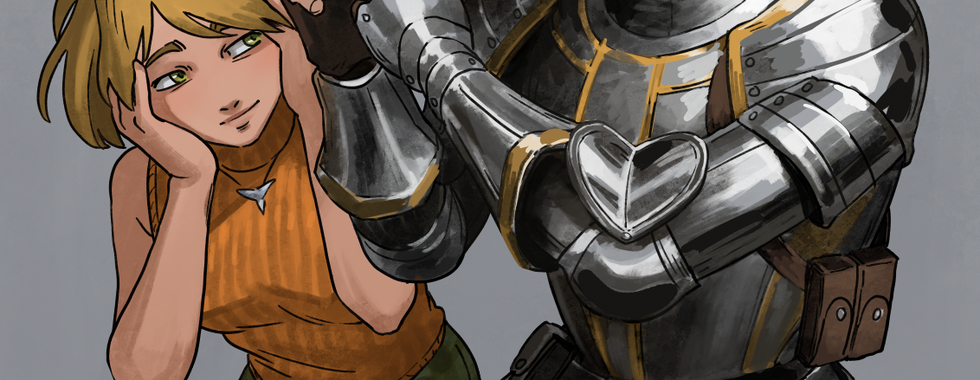- Malin Falch
- May 1, 2023
- 1 min read
Just a silly goofy drawing I thought of while playing the new Resident Evil 4 remake where Ashley says Leon would look dashing in a suit of armour... Of course I agree.
Wanted this to be a quick drawing, and I can see I could have stopped about halfway through the process and it would have looked fine, but I kept going and then I had to finish it with a more polished look. A "quick" drawing for me still takes 3 days.











































